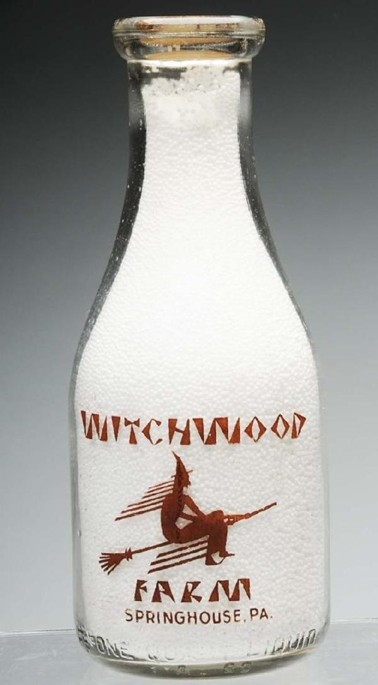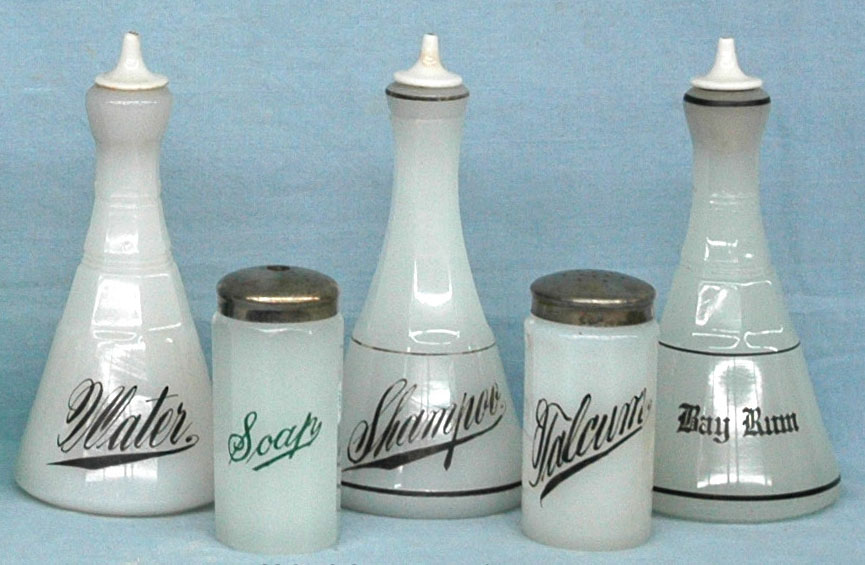Milk makes the world go round at our house. (Actually, milk does something even more important – allows the world to sleep….) But then, milk has always made the world go round, I suppose. When you think about it, the need to keep cattle and to preserve dairy products has dictated where houses were built – pastures were needed for cattle and springs were need to keep milk cool – and driven a number of technological developments from methods of cooling to techniques for killing bacteria and preserving food. Milk even contributed to the spread of tuberculosis, a disease that was killing humans even in the Neolithic era (although we were most likely lactose intolerant then) and one that later dramatically shaped European culture, influencing even the daily aspects of life like social customs and literature through the 19th century. (At a recent sale, even a plain glass bottle brought more than $1,000, perhaps in part because it retains the original paper seal announcing that the milk was “tuberculin tested.”)
After Pasteur invented his pasteurization process in 1863, a process that extended the shelf life of milk, the possibility of home milk delivery became much more likely, although milk was not delivered to homes until 1878 in the United States. Home delivery really took off though after the invention of the glass milk bottle in 1884, but milk bottles were rather expensive to produce, especially with the extra measures of molding a company’s name in the glass. As the American advertising machine really began to kick into gear in the early 20th century, manufacturers were constantly seeking a cheaper way to create a more eye-catching design, and “pyroglazing” or applied color labeling was what they came up with. This technique, akin to a silk-screen process, allowed color pigments to be applied to the glass and then fused by heat, and the end result was, especially with a full milk bottle providing a white background, colorful and impressive.
These pyroglazed bottles are, along with traditional milk bottles, still very popular with collectors. Milk bottles, because they’re usually clearly embossed with a company name and location, often bring the best prices based simply on the location. Small towns, unusual names, etc., bring strong prices, and the introduction of pyroglazed bottles adds another layer: color and decoration. My favorite is the one pictured above from Witchwood Farm; the graphic of a witch on her broomstick is great! Certain colors are less common or retain their hues better and, of course, if the words and picture are especially dramatic or graphic, this can also help the price. (For instance, this one brought a good price because not only are a variety of colors used, but the farm scene has beautiful detail and is unusual.) Still, it’s always important to remember condition; lots of chips and scratches or wear to the pyroglazed design can have a big impact on the final price. Glass milk bottles had a long run from the 1880s to the 1960s (although the current plastic-coated cartons were put into use in the 1930s), so there are plenty out there to pick from, especially at auction. We just entered a sale that included more than 120 milk bottles, so you can brush up on the current prices before heading out the flea market!
-Hollie Davis, Senior Editor, p4A.com
To search the Prices4Antiques antiques reference database for valuation information on hundreds of thousands of antiques and fine art visit our homepage www.prices4antiques.com.





